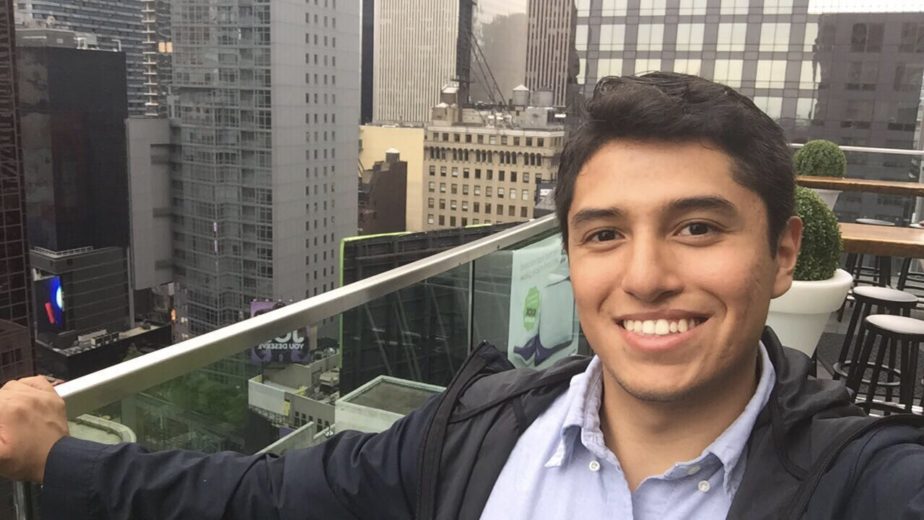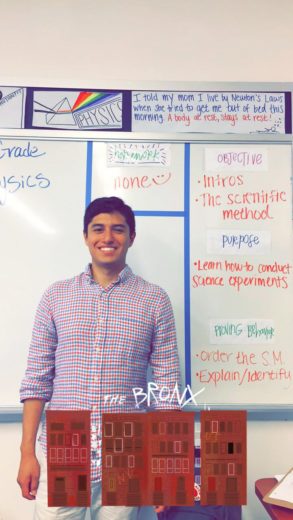
In 2017, we employed 72 Teaching Fellows and more than half were African American, Latino, or Asian. Crucially, 90% of our Teaching Fellows go on to pursue careers in education. Many, like 22-year-old Mexican immigrant Gabriel Sanchez, cite Breakthrough New York as their inspiration.
Sanchez’s experience teaching science to our students in the South Bronx affirmed his desire to become a teacher, rather than pursue one of the many other career paths available to him. A recent graduate of St. Gregory’s University in Oklahoma, with an honors degree in biomedical science, he recently received emergency teaching certification in the state—which is desperate for teachers—so he can teach high school science from January through May.
In the fall, Sanchez will move back to New York City to teach with the Teach for America program, which places young, aspiring educators in low-income communities and is one of the country’s largest providers of African American and Latino teachers. Gabe believes his students—most of whom will be African American and Latino—will benefit from his presence.

“Students color, particularly immigrants, see me and think ‘if he made it, so can I’,” Sanchez said. “They know that I can relate to some of their experiences. They become more confident in their own abilities and more comfortable speaking up.”
But it’s not only African American and Latino students who benefit from having teachers of color, believes Sanchez, who went to went to schools with predominantly white student populations. “White students also benefit from having teachers of different backgrounds,” he said. “Being exposed to different types of people shows them what the real world is like. Diversity makes us all better.”
While programs like Breakthrough New York help recruit young people of color to teaching, advocates and scholars point to steps that could help keep them in the profession long-term. Boston University School of Education professor Travis J. Bristol suggests tailoring professional development—and possibly school-based training—to address the experiences of teachers of color, and making schools of education more affordable.
Increasing compensation for teachers and teachers-in-training is also crucial. Young people of color are less likely to have significant financial support from their family, which means doing teaching fellowships and internships is less feasible than taking a temporary job which may pay more in the short term. At Breakthrough New York, we address this issue by providing stipend enhancements and housing for our Teaching Fellows with financial need.
Sanchez adds that a shift in our national priorities is needed. “Teaching in this country isn’t valued as much as it is in some other countries,” he said. “If the U.S. starts taking education more seriously and paying teachers more, I think the number of minority teachers will increase.”
